
This Docker container helps you get started with hosting your own dedicated Palworld server on your Synology NAS. Palworld is an upcoming action-adventure, survival, and monster-taming game created and published by Japanese developer Pocket Pair. The game is set in an open world populated with animal-like creatures called “Pals”, which players can battle and capture to use for base building, traversal, and combat. In this step by step guide I will show you how to install Palworld Server on your Synology NAS using Docker & Portainer.
This guide works perfectly with the latest Palworld Server v2.1.0 release.
STEP 1
Please Support My work by Making a Donation.
STEP 2
⚠️Note: It’s Mandatory to have the original Palworld client game installed on your PC.
STEP 3
Install Portainer using my step by step guide. If you already have Portainer installed on your Synology NAS, skip this STEP. Attention: Make sure you have installed the latest Portainer version.
STEP 4
Log into your router. Find the Port Forwarding area. At the moment I am using an RT6600ax Synology router. Remember that every router has its own interface design. Be sure to open the necessary port through your router settings, UDP. If the ports that point to your Synology NAS device are not opened, all the services you have activated on those specific ports will not work. All you need to do is give your Synology device permissions on port 8211 and 27015 UDP, then apply the settings. Follow the instructions in the image below. Note: Ports 8211 and 27015 are the essential ports to make the Palworld Server work.

STEP 5
Go to File Station and open the docker folder. Inside the docker folder, create one new folder and name it palworld-server. Follow the instructions in the image below.
Note: Be careful to enter only lowercase, not uppercase letters.
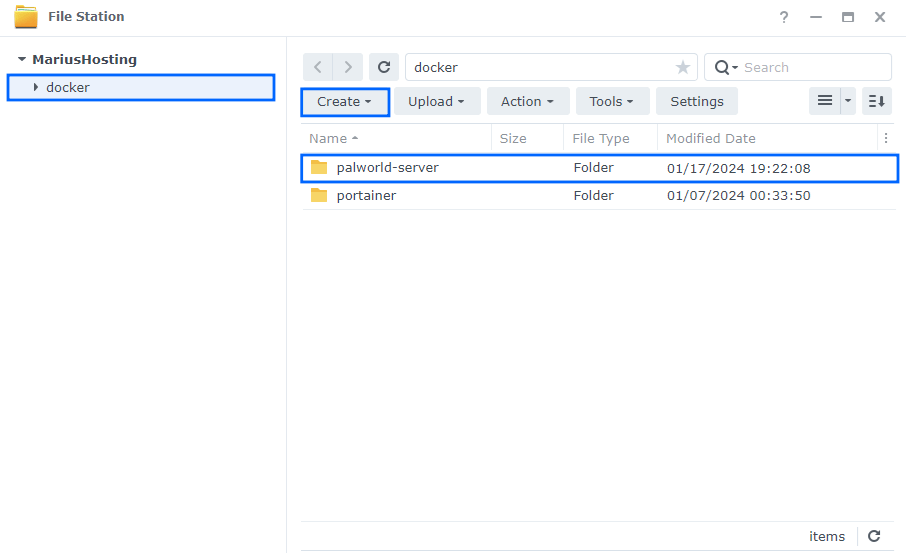
STEP 6
Log into Portainer using your username and password. On the left sidebar in Portainer, click on Home then Live connect. Follow the instructions in the image below.

On the left sidebar in Portainer, click on Stacks then + Add stack. Follow the instructions in the image below.

STEP 7
In the Name field type in palworld. Follow the instructions in the image below.
services:
palworld:
image: thijsvanloef/palworld-server-docker:latest # Use :latest-arm64 tag instead of :latest for arm64 NAS
container_name: Palworld-Server
stop_grace_period: 30s # Set to however long you are willing to wait for the container to gracefully stop
ports:
- 8211:8211/udp
- 27015:27015/udp
#- 8212:8212 # remove the # only if REST_API_ENABLED is set to true
environment:
PUID: 1026
PGID: 100
PORT: 8211
PLAYERS: 16
SERVER_PASSWORD: mariushosting
MULTITHREADING: true
REST_API_ENABLED: false #or true if REST API IS ENABLED
REST_API_PORT: 8212
TZ: Europe/Bucharest
ADMIN_PASSWORD: mariushostingadmin # You can secure the access to a server by using the admin password.
COMMUNITY: false # Enable this with true if you want your server to show up in the community servers tab, USE WITH SERVER_PASSWORD above.
SERVER_NAME: mariushosting
SERVER_DESCRIPTION: mariushosting NAS
CROSSPLAY_PLATFORMS: (Steam,Xbox,PS5,Mac)
volumes:
- /volume1/docker/palworld-server:/palworld:rw
restart: on-failure:5
Note: Before you paste the code above in the Web editor area below, change the value numbers for PUID and PGID with your own values. (Follow my step by step guide on how to do this.)
Note: Before you paste the code above in the Web editor area below, change the value for SERVER_PASSWORD. Type in your own password. mariushosting is an example for a server password.
Note: Before you paste the code above in the Web editor area below, change the value for TZ. (Select your current Time Zone from this list.)
Note: Before you paste the code above in the Web editor area below, change the value for ADMIN_PASSWORD. Type in your own password. mariushostingadmin is an example for an admin password.
Note: Before you paste the code above in the Web editor area below, change the value for SERVER_NAME. Type in your own server name. mariushosting is an example for a server name.
Note: Before you paste the code above in the Web editor area below, change the value for SERVER_DESCRIPTION. Type in your own server description. mariushosting NAS is an example for a server description
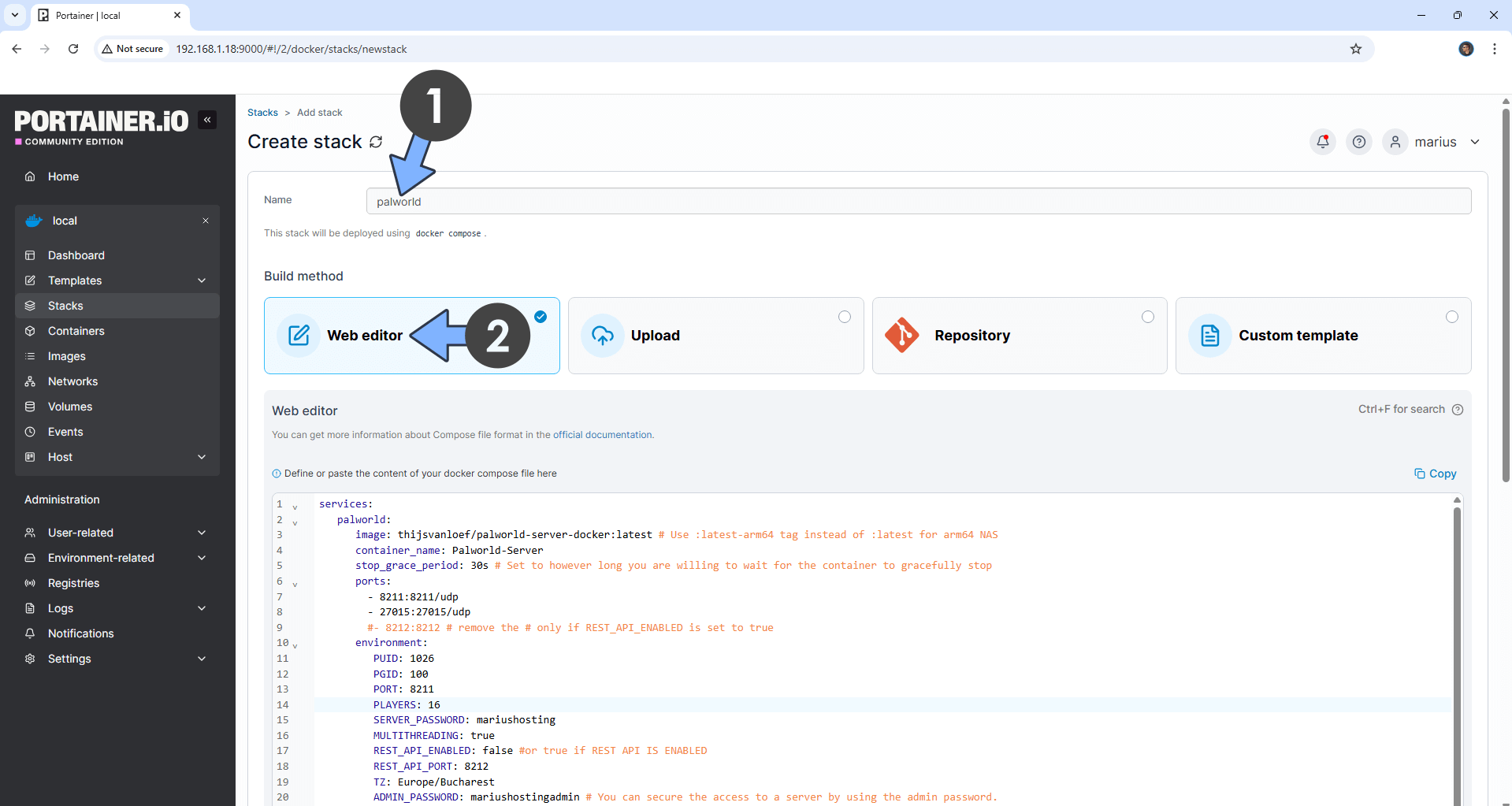
STEP 8
Scroll down on the page until you see a button named Deploy the stack. Click on it. Follow the instructions in the image below. The installation process can take up to a few minutes. It will depend on your Internet speed connection.
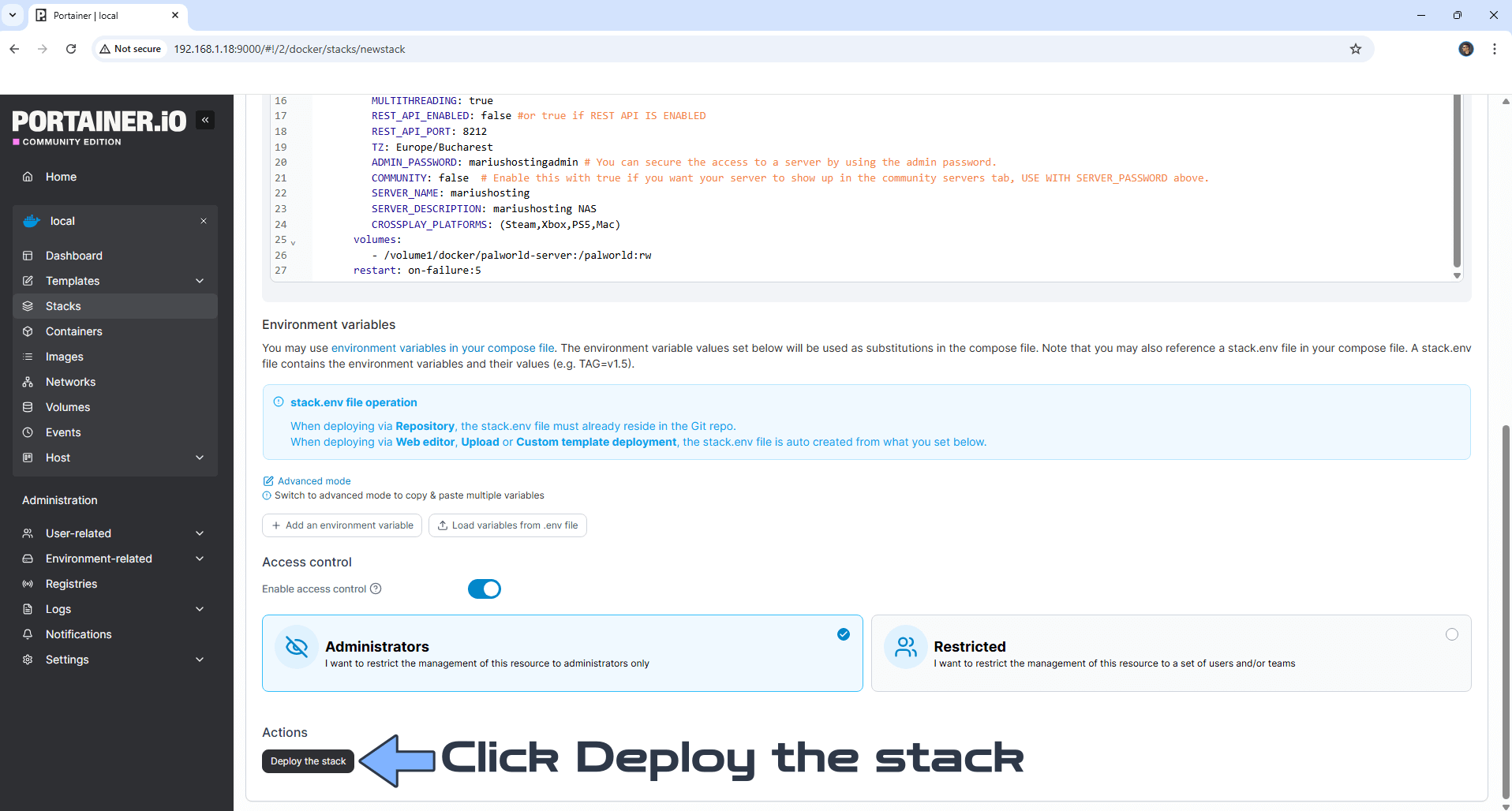
STEP 9
If everything goes right, you will see the following message at the top right of your screen: “Success Stack successfully deployed“.

STEP 10
In the Portainer left sidebar click Containers. Refresh the page from time to time until your Palworld-Server instance is labeled as Healthy. The full Palworld Server installation will take anywhere from 5 to 10 minutes, depending on your NAS hardware. Follow the instructions in the image below.
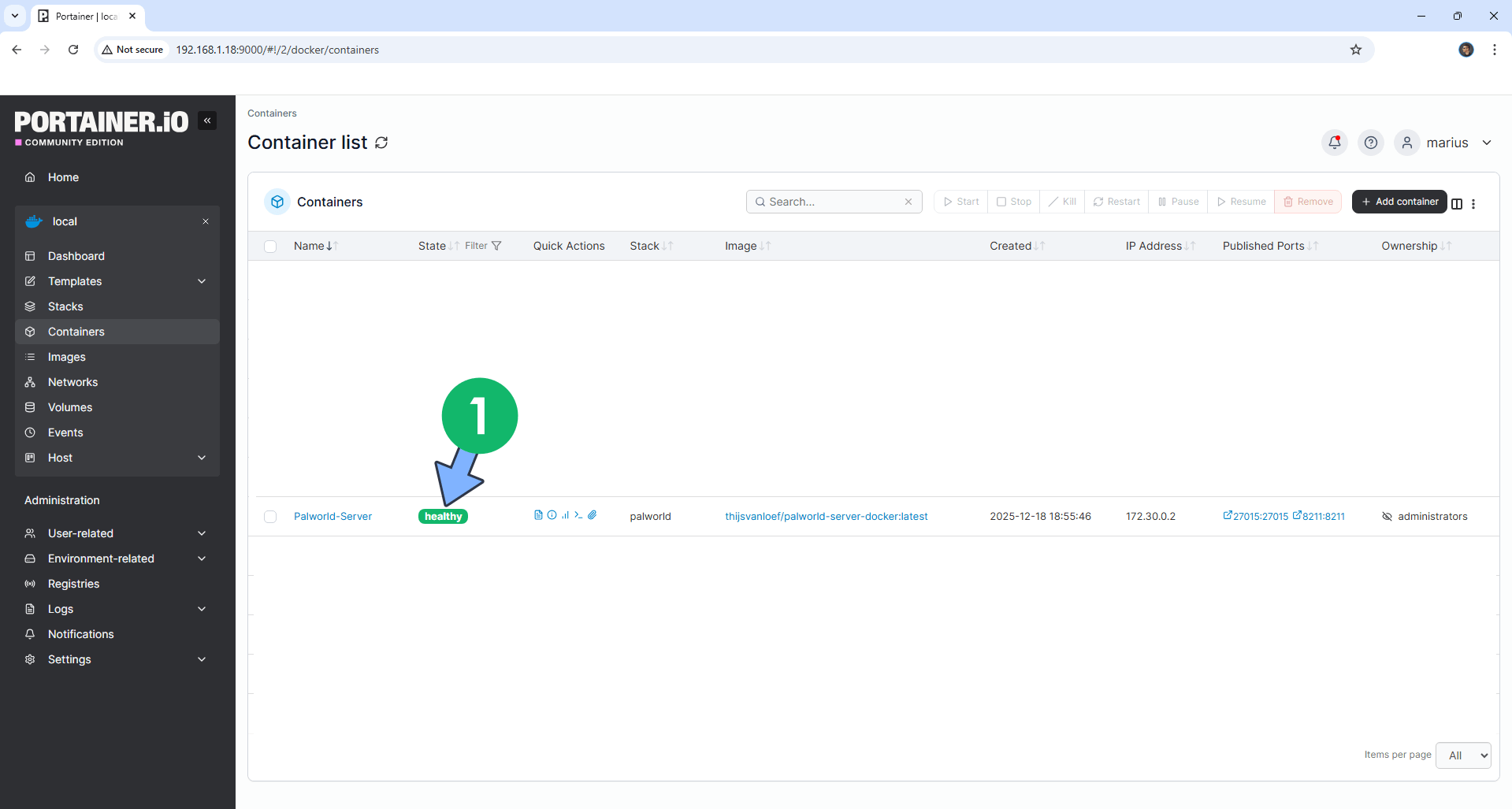
STEP 11
Once the container is labeled as Healthy, open your Palworld client / Multiplayer, then type in your NAS IP followed by :8211 then click Connect. Follow the instructions in the image below.
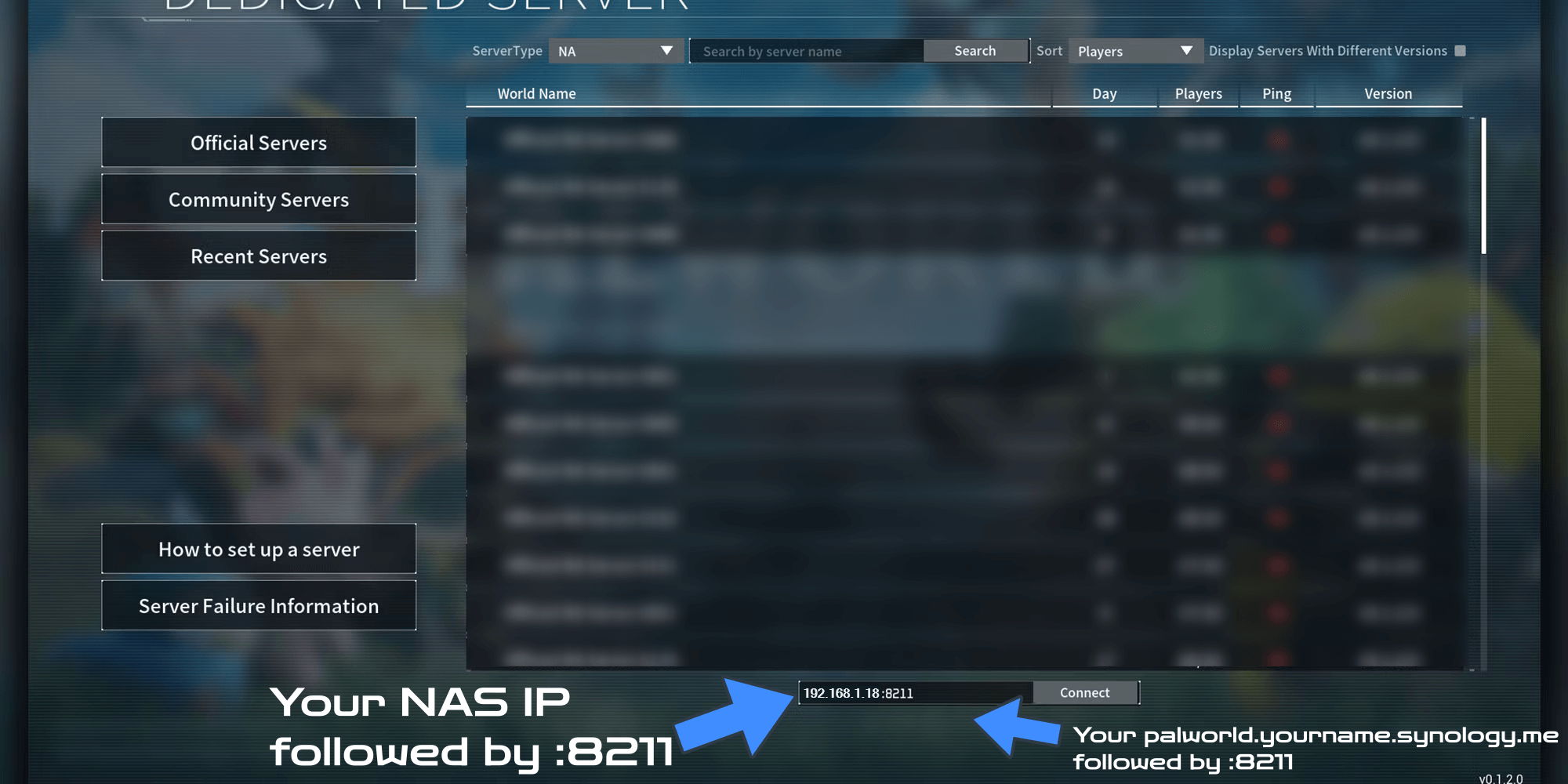
STEP 12
🟢Please Support My work by Making a Donation. Almost 99,9% of the people that install something using my guides forget to support my work, or just ignore STEP 1. I’ve been very honest about this aspect of my work since the beginning: I don’t run any ADS, I don’t require subscriptions, paid or otherwise, I don’t collect IPs, emails, and I don’t have any referral links from Amazon or other merchants. I also don’t have any POP-UPs or COOKIES. I have repeatedly been told over the years how much I have contributed to the community. It’s something I love doing and have been honest about my passion since the beginning. But I also Need The Community to Support me Back to be able to continue doing this work.
STEP 13
If you want to make your server public instead of your NAS IP followed by :8211 type in your own synology.me DDNS followed by :8211 as per the example above. Make sure you have created a reverse proxy as per the example below.
Go to Control Panel / Login Portal / Advanced Tab / click Reverse Proxy. Follow the instructions in the image below.
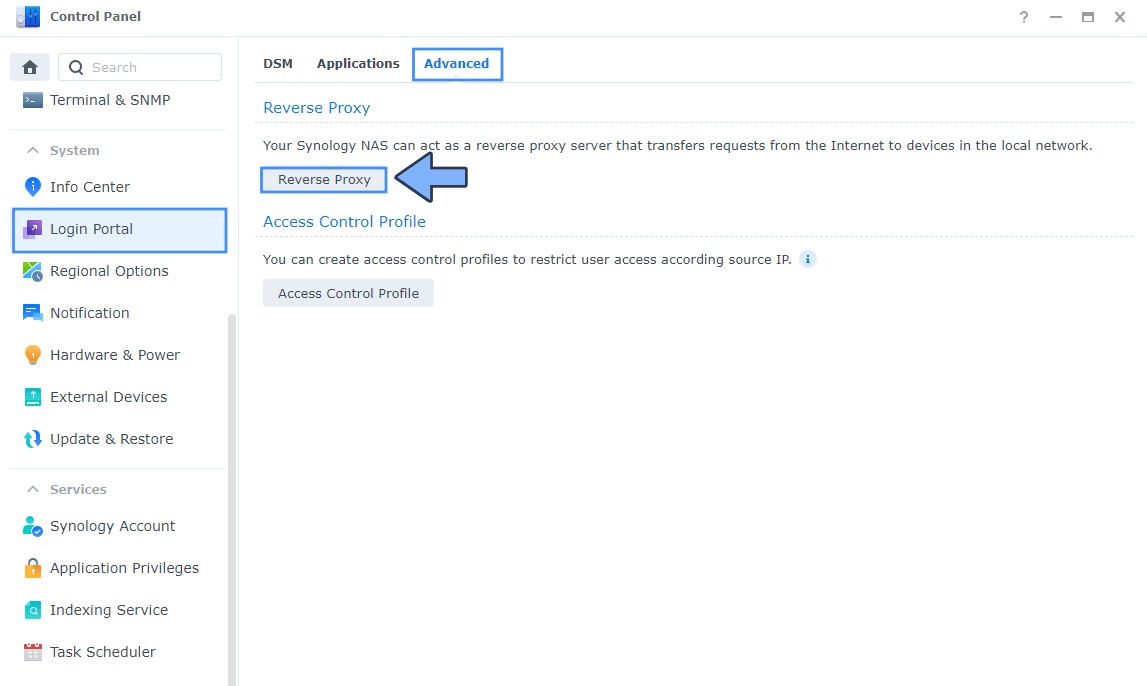
STEP 14
Now click the “Create” button. Follow the instructions in the image below.
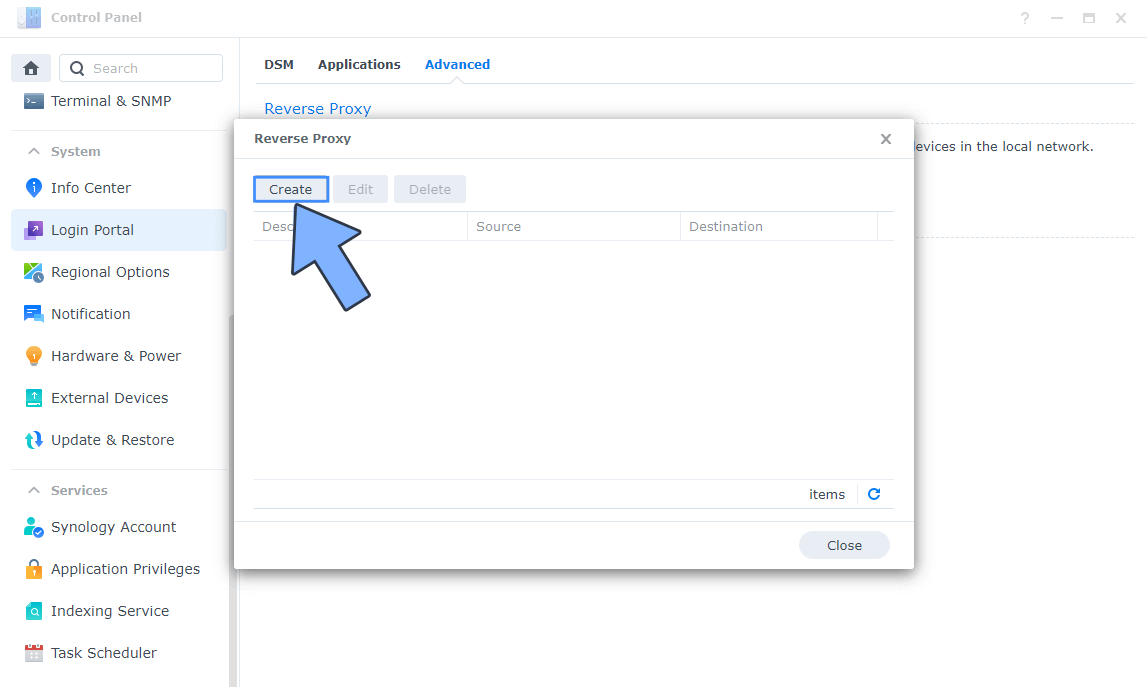
STEP 15
On the General area, set the Reverse Proxy Name description: type in Palworld-Server. After that, add the following instructions:
Source:
Protocol: HTTPS
Hostname: palworld.yourname.synology.me
Port: 443
Check Enable HSTS
Destination:
Protocol: HTTP
Hostname: localhost
Port: 8211
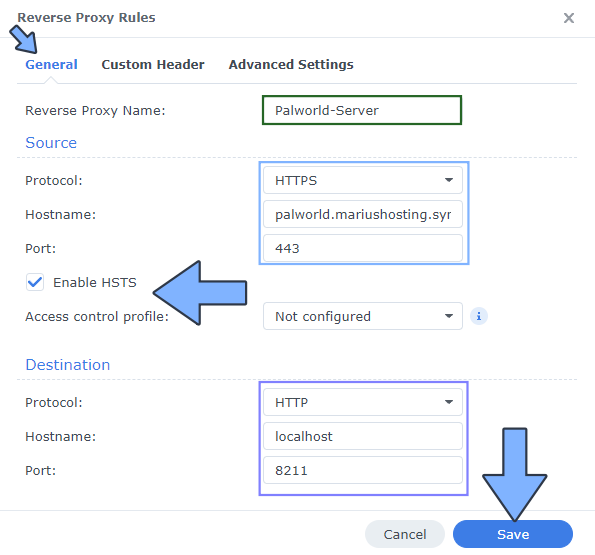
STEP 16
On the Reverse Proxy Rules click the Custom Header tab. Click Create and then, from the drop-down menu, click WebSocket. After you click on WebSocket, two Header Names and two Values will be automatically added. Click Save. Follow the instructions in the image below.

STEP 17
Also make sure the First and Second Best Practices have been applied by following my Best Practices article.
STEP 18
Now you can Play on your own Server!
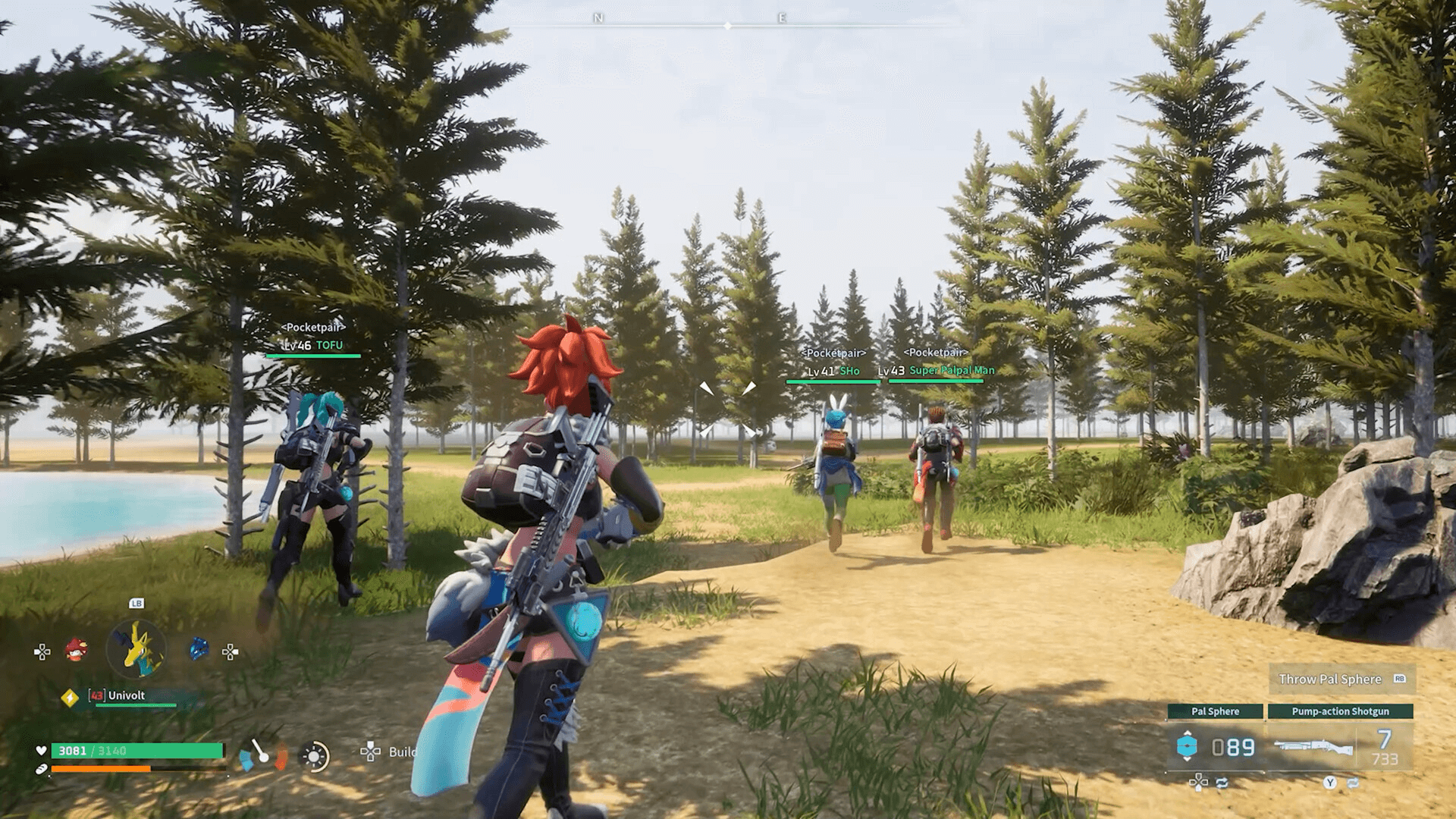
Enjoy Palworld Server!
If you encounter issues by using this container, make sure to check out the Common Docker issues article. ⚠️Warning: This container requires a lot of RAM so make sure your synology NAS model has more than 16GB of RAM.
Note: Can I run Docker on my Synology NAS? See the supported models.
Note: How to Back Up Docker Containers on your Synology NAS.
Note: Find out how to update the Palworld Server container with the latest image.
Note: How to Free Disk Space on Your NAS if You Run Docker.
Note: How to Schedule Start & Stop For Docker Containers.
Note: How to Activate Email Notifications.
Note: How to Add Access Control Profile on Your NAS.
Note: How to Change Docker Containers Restart Policy.
Note: How to Use Docker Containers With VPN.
Note: Convert Docker Run Into Docker Compose.
Note: How to Clean Docker.
Note: How to Clean Docker Automatically.
Note: Best Practices When Using Docker and DDNS.
Note: Some Docker Containers Need WebSocket.
Note: Find out the Best NAS Models For Docker.
Note: Activate Gmail SMTP For Docker Containers.
This post was updated on Thursday / December 18th, 2025 at 7:09 PM
